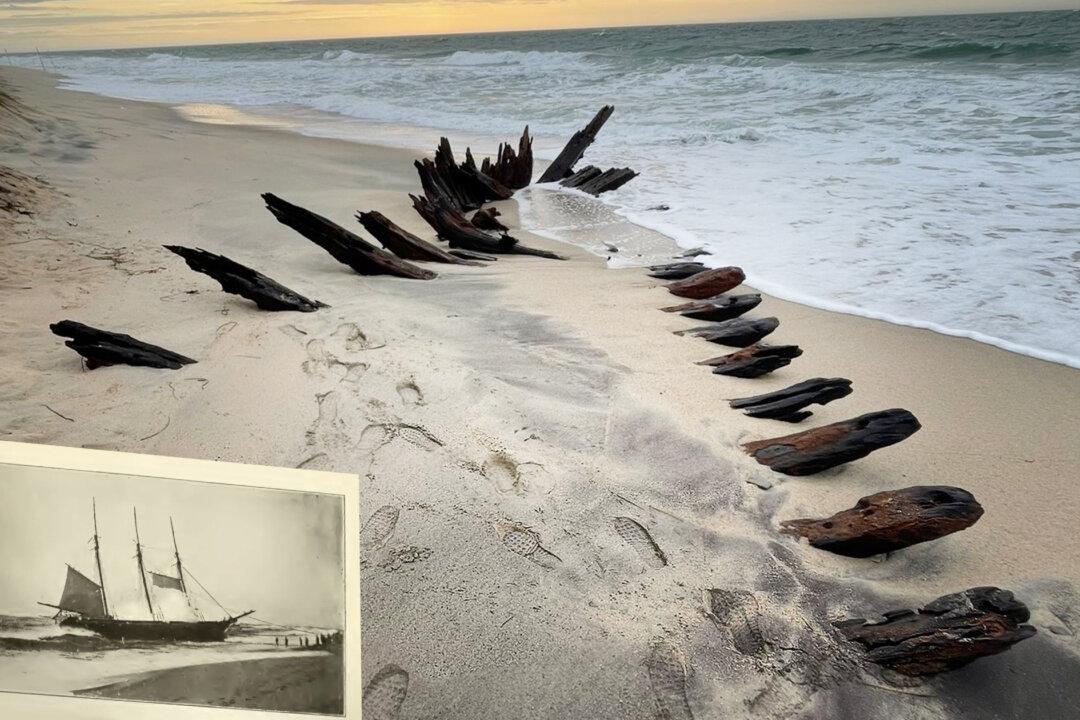When the bones of a wrecked wooden boat emerged from sands on the south shore of Nantucket, researchers from the Egan Maritime Institute knew they had something extraordinary on their hands. Still half buried, the shipwreck was old and there was barely anything left—just a broken keel and several spine-like timbers jutting out. Now, researchers think they may have identified the vessel.
The wreck’s initial discovery, on Sunday, Dec. 2, 2022, led Evan Schwanfelder, director of education at Egan, to contact the Massachusetts Board of Underwater Archaeological Resources (BUAR) to help archive the craft and hopefully pin down its identity and history. David Robinson, director and chief archeologist for BUAR, alongside marine archaeologist and BUAR board member Graham McKay, visited the island and met with Schwanfelder on Thursday, December 8. They also teamed up with Michael Harrison, chief curator at the Nantucket Historical Association, and Holly Backus, Nantucket’s preservation planner, in a bid to ascertain the wreck’s origins.






